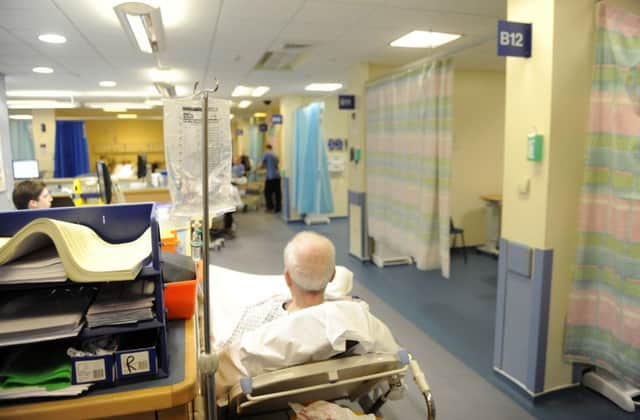Man sent home with fractured skull from Edinburgh Royal Infirmary


The Scottish Public Services Ombudsman (SPSO) upheld a complaint after two patients in separate cases were later found to have serious to life-threatening injuries after being discharged from the hospital.
In the first incident, a man referred to in report papers just published by the SPSO only as “Mr C”, raised concerns that the board had failed to identify his fractured skull.
Advertisement
Hide AdAdvertisement
Hide AdAfter he fell from a height and sought medical attention for a “severe and persisting” headache, medical staff at Edinburgh Royal Infirmary did not carry out a CT scan.
After the patient complained, the health board maintained that the treatment given to Mr C was “appropriate”.
But independent advice sought by the Ombudsman, from a consultant in emergency medicine said that guidance from Scottish Intercollegiate Guidelines Network (SIGN) and the board’s own protocol at the time, should have led to a CT scan being arranged.
The report stated: “We also found that the board had failed to carry out enough observations of Mr C’s level of consciousness.”
Advertisement
Hide AdAdvertisement
Hide AdIn particular, the board had failed to record that Mr C was reviewed by an experienced doctor before being discharged. SIGN guidelines specify that an experienced doctor should review all head injury patients before they are discharged to ensure that six specific criteria are met.
“We were also concerned that, despite a number of these failings being a repetition of those highlighted in case 201508264, the board had failed to identify the failings, either in response to Mr C’s complaint, as part of the audit they carried out into his care or when responding to our enquiries. For these reasons, we upheld this complaint.”
The findings mirror case 201508264 in which another patient, Mr A, was discharged from the Royal Infirmary and later found to have suffered a brain haemorrhage.
At A&E he was assessed as having reduced consciousness due to being drunk and was admitted for the night.
Advertisement
Hide AdAdvertisement
Hide AdHe was discharged the next morning and collected by his mother, who found him to be confused and disorientated. However, reception staff insisted he was medically fit to leave.
Mr A’s mother remained concerned and took him to A&E at Wishaw General Hospital, where a CT scan was carried out showing Mr A had suffered a brain haemorrhage.
He was immediately transferred to Glasgow’s Southern General Hospital for emergency surgery.
The SPSO has now recommended NHS Lothian carry out an audit of cases of a similar nature, to ensure they are dealt with appropriately and ensure all staff follow head injury protocol.
NHS Lothian was also urged to apologise to both patients.
Advertisement
Hide AdAdvertisement
Hide AdScottish Conservative health spokesman Miles Briggs said: “Following protocols correctly is absolutely vital and NHS Lothian need to provide transparency on how lessons have been learnt to ensure that this will not happen again.
“I have written to the Cabinet Secretary for Health to seek assurances on what steps and monitoring the Scottish Government are taking to ensure that these failings will not be repeated.”
NHS Lothian medical director Tracey Gillies said: “We apologised to Mr C in November 2017 and publicly apologise to him again now.
“We accept and have implemented all the Ombudsman recommendations.
Advertisement
Hide AdAdvertisement
Hide Ad“We have looked carefully at our clinical protocols and processes to ensure we provide a timely and appropriate response when treating patients with head injuries. NHS Lothian takes all complaints very seriously and we continue to learn lessons from them.”